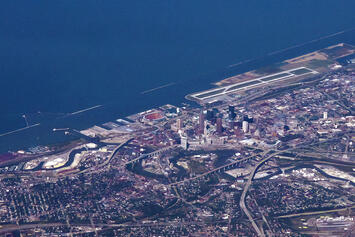
Does anyone really think about the relationship a city has to its surrounding metro area? It means a lot more than you might think.
I saw something on X/Twitter last week that brought this to mind. A fellow Midwesterner kicked off a thread with an interesting question: what major American city has the worst relationship with its suburbs? Early on, I noticed a theme in the responses before I weighed in. Milwaukee, St. Louis, Detroit, Cleveland led the lists. There were occasional replies like Baltimore, Newark, Atlanta, even Jackson, MS. Of course, New York, Los Angeles and Chicago were mentioned, but there will always be people who want to call out the largest cities. But for every one of those, another Midwestern city would be mentioned.
My reply: “I've always said Midwest metros have the widest city/suburb divide of any region in the nation. Pick any of them.”
This has been true for decades. It came to light during the 1960’s as urban unrest kicked off dramatic “White flight” from cities to the suburbs. The decline of manufacturing jobs in the ‘70s in the Midwest led to economic problems that accelerated the outflow. The lure of Sun Belt metros in the ‘80s and ‘90s offered Midwesterners an escape from the economic torment. The rise of creative class coastal cities in the 2000’s and 2010’s, many of them former industrial hubs transformed into highly educated talent magnets, was yet another accelerator. Those left behind often had legitimate reasons for not relocating, but never quite got rid of the resentment.
Who controls the metro narrative?
There are all sorts of perception biases at work when people discuss opinions on metro areas. It starts with some basic thoughts on one’s working definitions of “city” and “suburb” and develops from there. This includes perceptions on the type of infrastructure that define a place. More dense spaces built before auto domination are associated with for being “city”, while clusters of mostly single-use districts connected by freeways get the nod for being “suburb”.
There’s an inter-metro perspective, or comparisons between metros. Broadly speaking, cities are noted as relatively unique places that differ in character across the country. Meanwhile, suburbs are viewed as places that share a consistent character across the country at best, and perhaps a certain monotony at worst. It’s usually a given that core cities lend whatever perception that exists about them to its entire metro area, true or not. Whatever image one has of someone from New York or Los Angeles, for example, is usually fairly similar whether the New Yorker lives on the Upper East Side or on Long Island, or the Angeleno lives in Santa Monica or Irvine, despite the fact that there are great differences between them.
Read the rest of this piece at The Corner Side Yard.
Pete Saunders is a writer and researcher whose work focuses on urbanism and public policy. Pete has been the editor/publisher of the Corner Side Yard, an urbanist blog, since 2012. Pete is also an urban affairs contributor to Forbes Magazine's online platform. Pete's writings have been published widely in traditional and internet media outlets, including the feature article in the December 2018 issue of Planning Magazine. Pete has more than twenty years' experience in planning, economic development, and community development, with stops in the public, private and non-profit sectors. He lives in Chicago.
Photo: Aerial view of Cleveland, via Flickr under CC 2.0 License.












